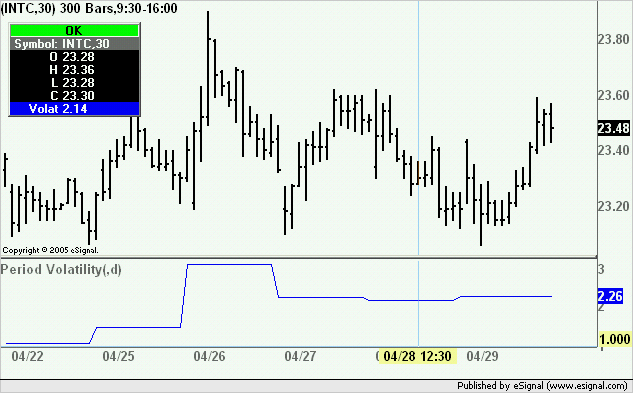I dont find "Day Volatility" in the Quote-Windows list, or indicator. Such using (DayHigh-DayLow / Open)
For example; RIMM ($65.65-$63.30 / $64.61) = 3.6% INTC ($23.62-$23.12 / $23.35) = 2.1%
The formula tell in average RIMM is more volatile for scalping than INTC
Someone have any idea how to formulate an EFS that take a OHLC and draw result in percent in a bottom studies.
At best the formula could also use 30min 10m, OHLC bar to draw bottom indicator.
Swinger
For example; RIMM ($65.65-$63.30 / $64.61) = 3.6% INTC ($23.62-$23.12 / $23.35) = 2.1%
The formula tell in average RIMM is more volatile for scalping than INTC
Someone have any idea how to formulate an EFS that take a OHLC and draw result in percent in a bottom studies.
At best the formula could also use 30min 10m, OHLC bar to draw bottom indicator.
Swinger

Comment